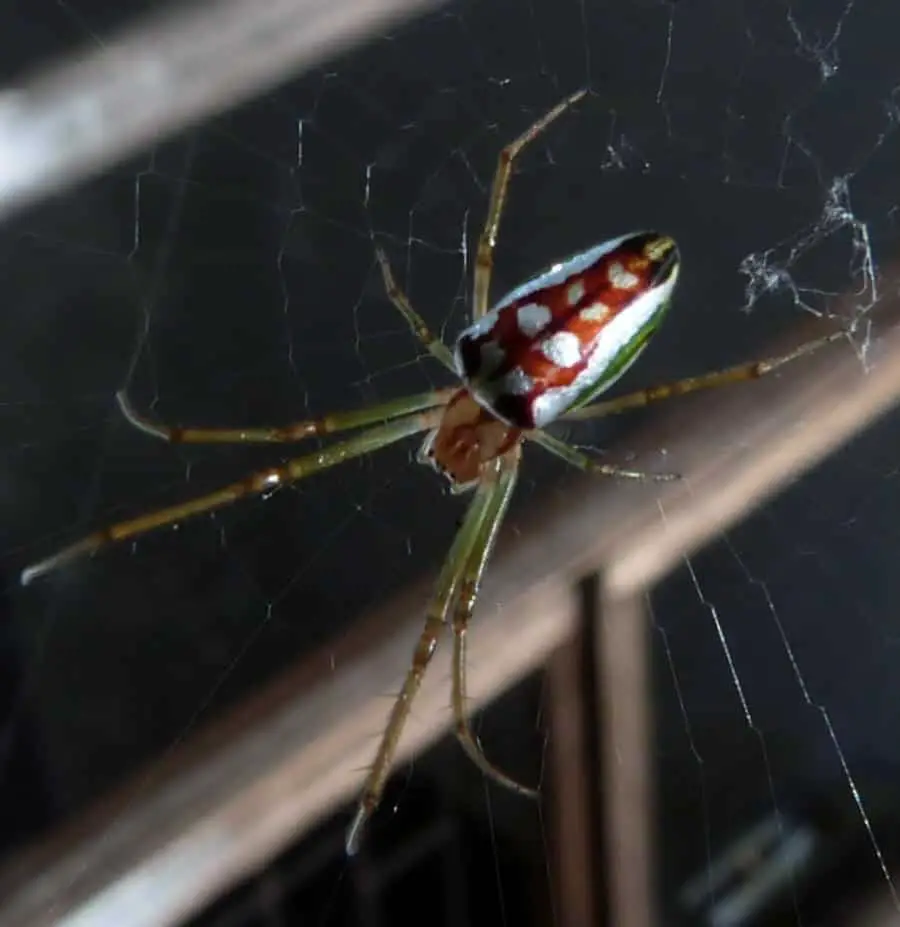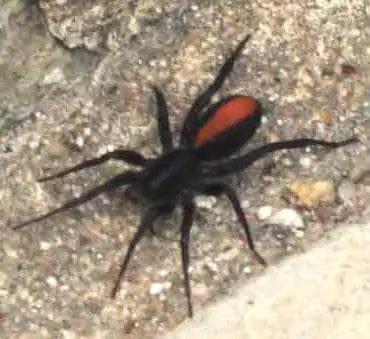Tarantulas comprise a group of large and often hairy spiders belonging to the family Theraphosidae. Currently, about 1,000 species have been identified. Some of the more common species have become popular in the exotic pet trade. New World species kept as pets have urticating hairs that can cause irritation to the skin, and in extreme cases, cause damage to the […]
Hobo Spider – Eratigena agrestis
Disclaimer: Eratigena and Tegenaria are very hard to tell apart, and I am not at all certain that all the IDs on the tegenaria and eratigena pages are correct. I have done the best I can to try and classify them correctly but would be happy for anyone to tell me if they believe otherwise. Eratigena belongs to […]
Basilica Spiders
In contrast with the flat webs of the orchard spiders, the webs of most of the Basilica Orb Weaver spiders (Mecynogea lemniscata) fill a three-dimensional space and no two threads seem to be in the same plane. They are often found in groups in contiguous webs. Maybe they get their common name from this web […]
Money Spider
Spiders in this family are commonly known as sheet weavers (from the shape of their webs), or money spiders (in the United Kingdom, Ireland, Australia, New Zealand, and in Portugal, from the superstition that if such a spider is seen running on you, it has come to spin you new clothes, meaning financial good fortune). Of the 620 species […]
Red Spotted Ant Mimic Spider
Members of the genus Castianeira are considered mimics of large ants, such as carpenter ants, and mutillid wasps, which are known as “velvet ants.” These spiders walk about slowly the way ants do and then only move fast when disturbed. Castianeira descripta, the red spotted ant mimic spider only walks with six legs, like an ant. As […]
Ground Spiders – Gnaphosidae
Ground spiders (family Gnaphosidae) are reddish, brown, gray, striped, black spiders, and include nearly 2,000 described species in over 100 genera, distributed worldwide. This makes the family the seventh largest known. New species are still being discovered. They are closely related to Clubionidae. Common genera include Gnaphosa, Drassodes, Micaria, Cesonia, Zelotes and many others. There are a […]
Cyclosa Conica
Cyclosa conica is a small spider with no common name. It is an orb weaver, and it is easily recognized by the way it strings together the dead bodies of insects and other debris and hangs it near the centre of its web. It hides on this string of debris, and its natural coloration makes it […]
Common House Spider
Appearance: Common House Spiders or American House Spiders, Parasteatoda tepidariorum, are generally dull, with patterns consisting of brown shades for coloration, often giving a vague spotted appearance that is particularly noticeable on the legs. Their average body size is a quarter-inch (6 mm) long, but they can be an inch (2.5 cm) or more across with legs […]
Darwin’s Bark Spider
Darwin’s bark spider (Caerostris darwini) is an orb-weaver spider that produces one of the largest known orb webs, with anchor lines spanning up to 25 metres (82 ft). The spider was discovered in Madagascar in the Andasibe-Mantadia National Park in 2009. The species was named in honour of the naturalist Charles Darwin, with the description being prepared precisely 150 years after the publication of The Origin of […]
Red-back Spider – Lactrodectus hasselti
Hundreds of people are bitten by Red-back Spiders every year, however very few are seriously injured. (Check out a news article at the end of this page.) Its close relative, the Black Widow Spider, is probably the most common cause of serious spider bites overseas. An almost identical spider, the Katipo, is the only venomous spider in New Zealand. […]










